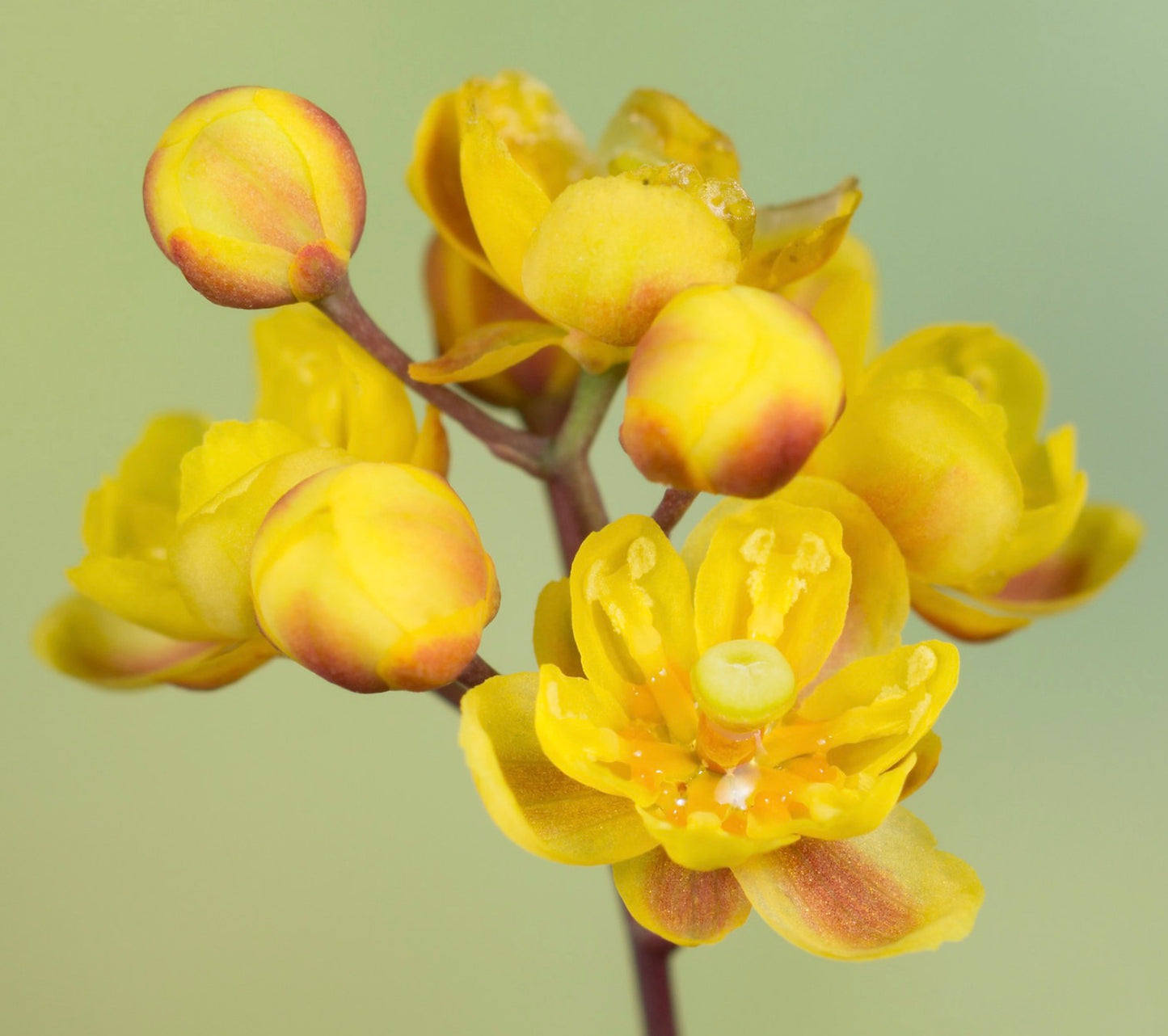- Catalogue Plants
Berberis vulgaris 30-50cm
Berberis vulgaris 30-50cm
Couldn't load pickup availability
Plant Description
Berberis vulgaris, commonly known as common barberry, European barberry, or simply barberry, is a deciduous shrub native to Europe, North Africa, and western Asia. Belonging to the Berberidaceae family, this versatile plant is cherished for its ornamental features and the tart, red berries it produces. Common barberry typically grows to a height of 3 to 10 feet (1 to 3 meters) and boasts oval-shaped, serrated leaves that turn brilliant shades of red or orange in the fall. In spring, it produces fragrant yellow flowers that give way to small, oblong, red or dark purple berries in late summer. While prized for its aesthetic appeal, it has also been historically used for medicinal and culinary purposes.
Cultivation:
-
Climate and Location: Berberis vulgaris is adaptable to a range of climates but thrives in temperate to subarctic regions. It can tolerate full sun to partial shade.
-
Soil: Plant common barberry in well-draining soil with a pH that is slightly acidic to slightly alkaline. It can adapt to various soil types, including loam, sandy, or clay soils.
-
Watering: Common barberry is relatively drought-tolerant once established. Water newly planted shrubs regularly to aid root establishment. Once mature, it can withstand periods of dryness, but regular watering during prolonged droughts is beneficial.
-
Pruning: Prune common barberry in late winter or early spring to maintain its shape, remove dead or diseased branches, and encourage new growth. Be mindful of the plant's thorns when pruning.
-
Fertilization: These shrubs do not typically require heavy fertilization. A balanced, slow-release fertilizer applied in spring can provide essential nutrients.
-
Mulching: Apply a layer of mulch around the base of the plant to conserve soil moisture, regulate soil temperature, and suppress weeds. Keep the mulch away from the trunk to prevent rot.
-
Propagation: Common barberry can be propagated through seeds, cuttings, or division. Collect seeds in late summer and sow them in the fall. Semi-hardwood cuttings can be taken in late summer, while division is best done in early spring.
-
Pests and Diseases: While common barberry is generally hardy, it can be susceptible to certain pests and diseases, notably rust fungi that affect other plants. Be vigilant and treat any issues promptly to prevent their spread.
-
Berries: The red or purple berries produced by common barberry are edible and can be used in jams, jellies, or herbal teas. However, be aware that the plant may serve as an alternate host for some plant diseases, which can impact nearby crops like wheat.
-
Regulations: In some regions, Berberis vulgaris is considered an invasive species due to its potential to host rust diseases that harm agricultural crops. Check local regulations before planting it in your area.
Common barberry is a versatile shrub known for its attractive foliage, vibrant berries, and adaptability to various garden settings. Whether used as a border plant, a hedge, or a source of edible berries, this plant can enhance the beauty and utility of your landscape.
IMPORTANT: Please be aware that picture 1 show adult plant not for sale, the offer is for a plant in the dimension indicated in title description.
Disclaimer: Please keep on mind that the plant may have grown since pictured. Also be aware that most plants change across seasons. If present foliage could have been fallen or change in its color.
Botanical family: Berberidaceae
Botanical genus: Berberis
Botanical species: Berberis vulgaris
SKU:BA-1291-S
Cultivation
Cultivation
Additional information
Additional information
Plant Height: 30-50cm
Plant Diameter:
Picture Taken on:
Pot Size:
Grafted/Not Grafted:


